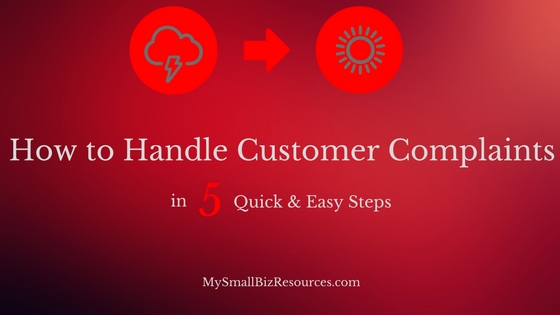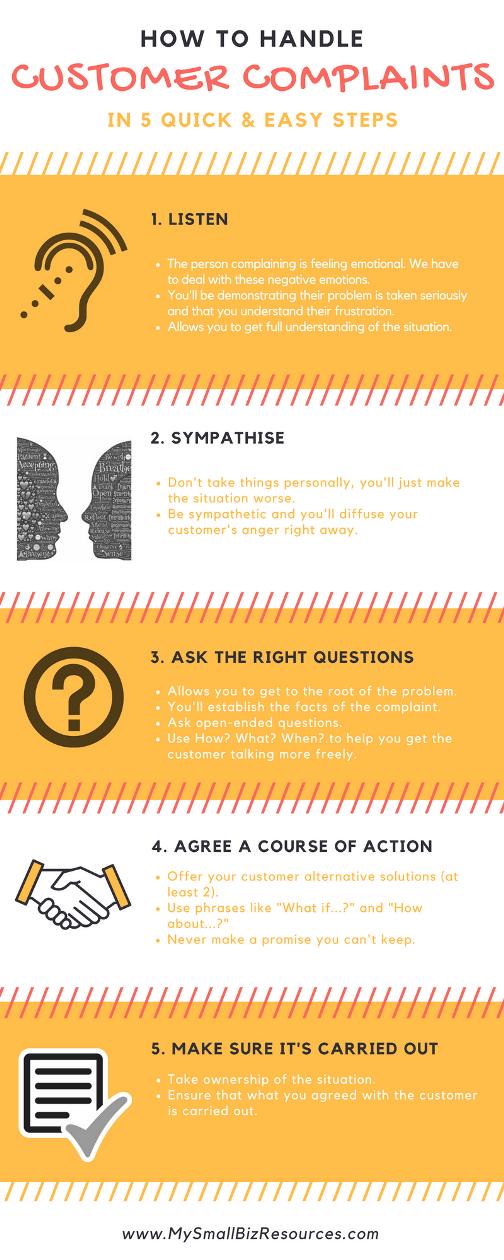 All businesses have to deal with customer complaints, it goes with the territory! It’s not the most pleasant of situations but it is something that we all have to face at some point. The important thing is to have a good customer complaints procedure in place so that you can turn potentially negative situations into positive ones.
All businesses have to deal with customer complaints, it goes with the territory! It’s not the most pleasant of situations but it is something that we all have to face at some point. The important thing is to have a good customer complaints procedure in place so that you can turn potentially negative situations into positive ones.
How many times have you been faced with an angry customer, upset with the service received and demanding an explanation, an apology or, god forbid, some form of compensation! I’ve worked in hospitality for most of my life and have had my fair share of customer complaints to deal with. Luckily for me, one of my first bosses was a great believer in staff training and introduced us to a very simple but effective 5 step procedure to deal with customer complaints.
These principles are ideal for training new staff members who have to deal with customers on a daily basis; however, it’s also useful for service veterans who are sometimes guilty of forgetting the basics of handling customer complaints effectively.
So without further a-do, here are the 5 steps to effectively handling customer complaints:
1) Listen
Yes, Listen; simple, but very important. You must remember that people who actually take the time to complain are feeling very emotional. Our first objective is to deal with these negative emotions before actually dealing with the complaint itself. Let the person say what they have to say and let off steam; don’t even think about interrupting them!
By taking the time to listen to the complaint you’re demonstrating that their problem is taken seriously and that you understand their frustration. If you listen to the whole story, you reduce the risk of misinterpreting the situation and making matters worse.
2) Sympathise
The customer’s complaint isn’t directed at you, even though it might seem like it. Make sure you don’t take things personally or you’ll just make matters worse.
Your customer isn’t interested in the how’s and why’s of a problem; they just want it fixed! Don’t make excuses. Be sympathetic and you’ll be diffusing the customer’s anger from the very beginning.
3) Ask the Right Questions
Once you’ve managed to calm down the customer you need to get to the root of the problem. You’ve dealt with the emotions – often the hardest part – but now you have to ask questions and establish the facts of the complaint.
Be careful how you word your questions; asking open ended questions will help to get the customer talking more freely. Try starting questions with How? What? and When? Customers must see that they stand to benefit from answering your questions; the last thing you want is for them to think you’re trying to catch them out and blame them for the problem.
4) Agree a Course of Action
You’re customer is now calm and you’ve found out the route of the problem, now comes the difficult part: What to do about the problem!
First of all, make sure you offer your customer alternative solutions; this is pure psychology. By giving them at least two options, they feel more involved in the outcome. Often, your options will be restricted but if you use phrases like “What if…?” and “How about….?” you make it sound like you are offering them a customized solution.
One key point to remember: Never make a promise that you can’t keep. You’ll just make matters much worse.
5) Make Sure It’s Carried Out
Once you and the customer have agreed a course of action, you can’t leave it at that. You must take ownership of the situation and ensure that what you have agreed is actually carried out. In a larger organisation that might mean involving more team members; however, the ultimate responsibility must lie with you.
So there you have it, a simple customer complaints procedure in five simple but highly effective steps. Apply these customer service tips when trying to diffuse even the most delicate of customer complaints. Try them out and see how easy it can be to turn a potentially negative experience for your customer into a positive one.

One comment